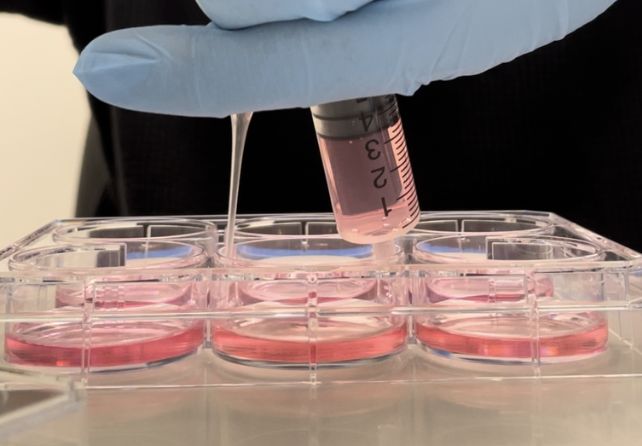ARTICLE AD
Our brain isn't the only place memories form in our body. New York University (NYU) researchers have discovered learning through repetition may be fundamental to all of our cells. The process may also help explain why taking breaks is such a powerful learning tool.
"Learning and memory are generally associated with brains and brain cells alone, but our study shows that other cells in the body can learn and form memories, too," says neuroscientist Nikolay Kukushkin.
Better understanding of how this process works could lead to more effective treatments for learning and memory problems, Kukushkin explains.
Many learn the hard way that cramming for exams doesn't create the most reliable or long term memories. Multiple cycles of chemical activity through a repeated behavior is what triggers the memory-formation process among our neurons, encoding incresasingly stronger memories. This phenomenon is called the massed-spaced effect and is highly conserved in all animals at both the cellular and behavioral levels.
By exposing non-brain nerve and kidney cells to similar chemical patterns in the lab, Kukushkin and colleagues showed for the first time that these tissues experience massed-spaced effect too. Genes associated with memory formation in neurons also seemed to be activated within these cells, based on measures of a byproduct of the genes' expression called luciferase.
"The ability to learn from spaced repetition isn't unique to brain cells, but, in fact, might be a fundamental property of all cells," explains Kukushkin.
 An NYU researcher administers chemical signals to non-neural cells grown in a culture plate. (Nikolay Kukushkin.)
An NYU researcher administers chemical signals to non-neural cells grown in a culture plate. (Nikolay Kukushkin.)How the nerve and kidney cells responsed depended on the number of rounds of protein kinases A and C (PKA and PKC) they were treated with. These chemical 'training pulses' are known components of memory forming signaling cascades.
"A three-minute pulse did turn on the 'memory gene,' but only for an hour or two, whereas after four pulses, the gene was turned on stronger, and stayed on for days," Kukushkin writes for Psychology Today.
The cell responses also depended on the time between pulses. These factors varied how strongly the memory-forming molecules were activated, and for how long – exactly what happens with our neurons.
"Memory exists not only in the brain, but throughout our body, and this 'body memory' could play a role in health and disease," writes Kukushkin.
There's still much to learn about how this all works inside human bodies. Previously the researchers found increasing interactions between PKA and enzymes called extracellular signal-regulated kinases in sea hares (Aplysia) – animals commonly used to study neuron behavior – not only enhanced learning but could repair learning deficits too.
"We will need to treat our body more like the brain," Kukushkin recommends. "For example, consider what our pancreas remembers about the pattern of our past meals to maintain healthy levels of blood glucose or consider what a cancer cell remembers about the pattern of chemotherapy."
This research was published in Nature Communications.

 10 hours ago
2
10 hours ago
2 

